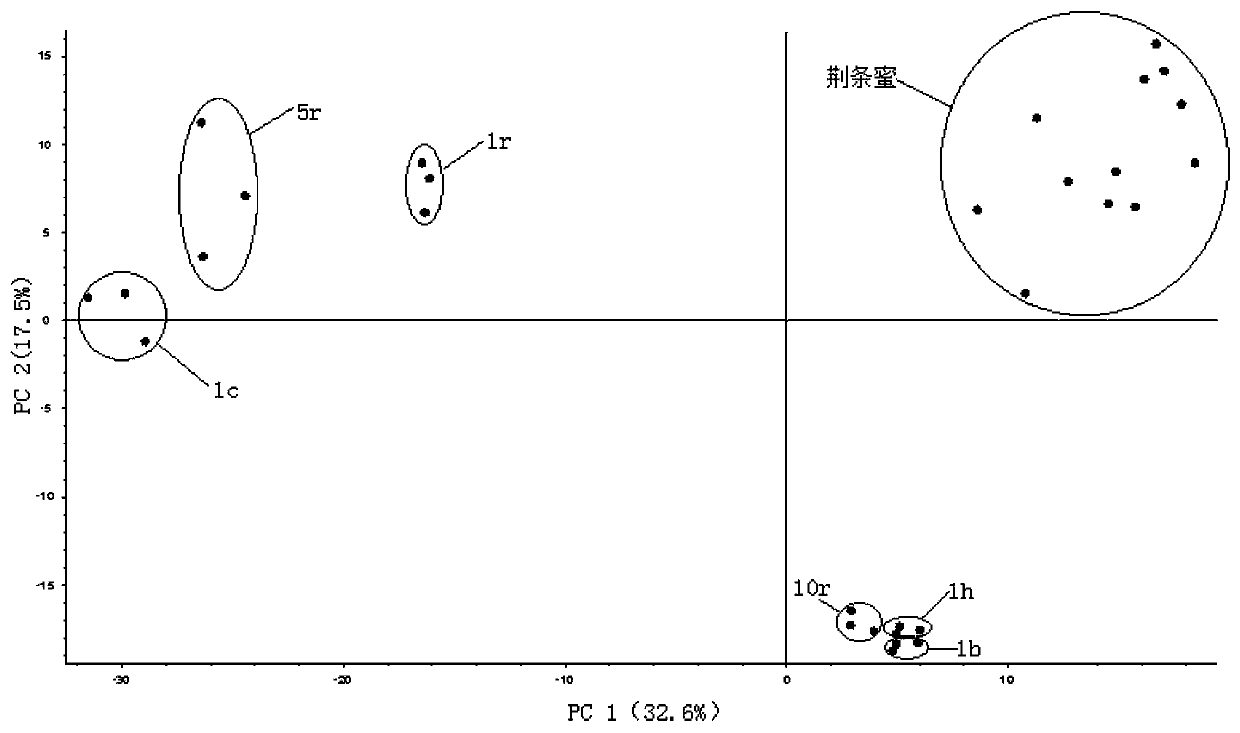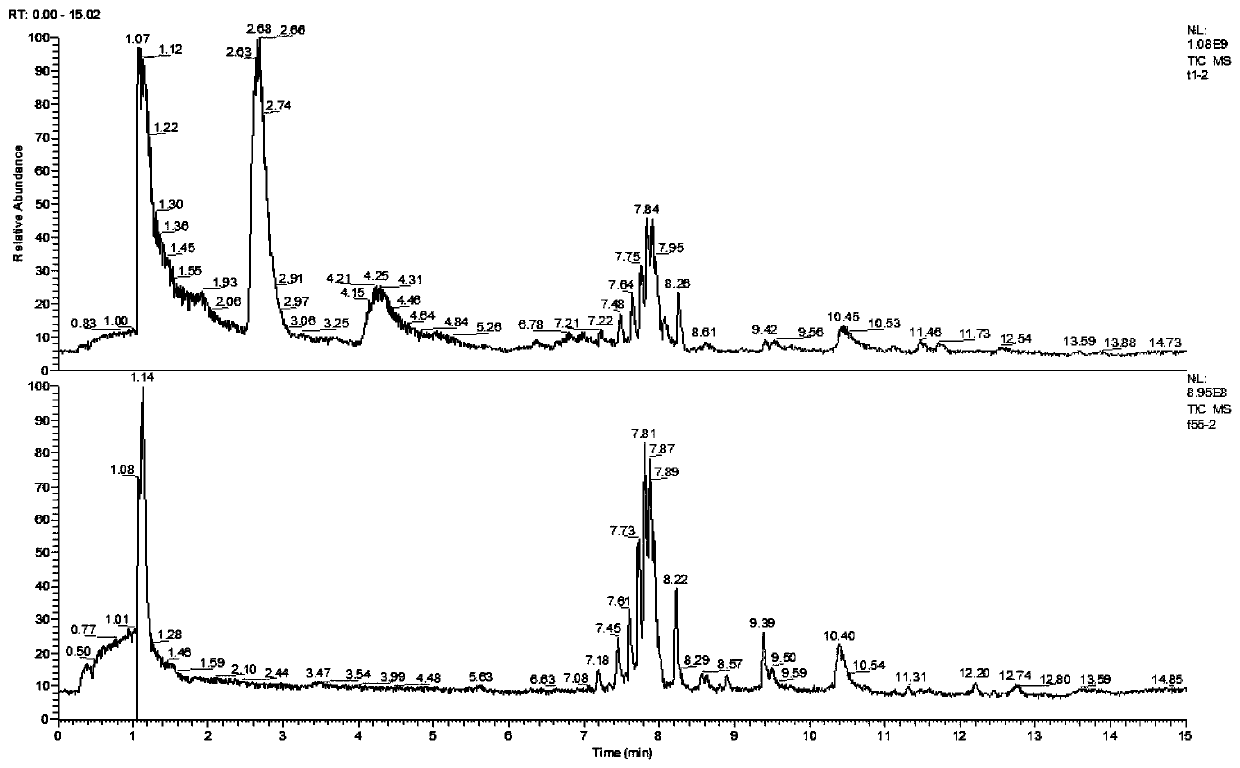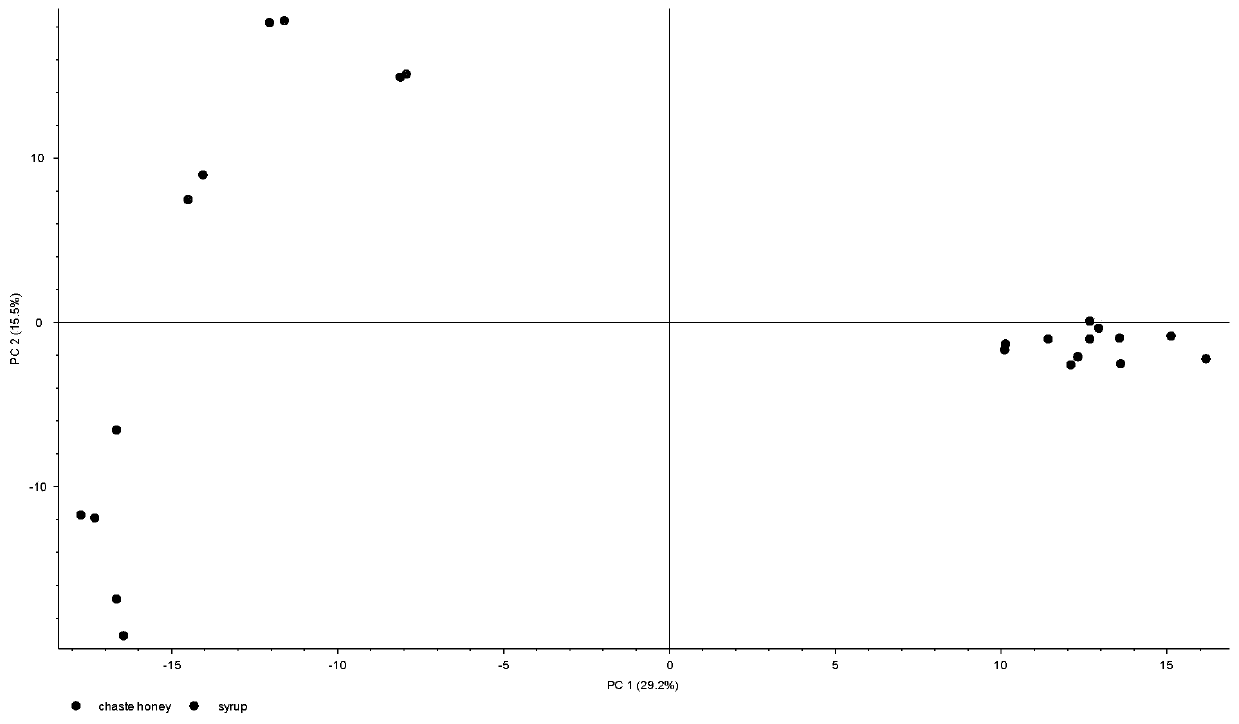An analytical method for distinguishing chattia honey and syrup adulterated chattia honey
An analysis method, the technology of Vitex honey, is applied in the field of food adulteration identification, which can solve the problems of high modeling cost, inapplicability to daily monitoring, and increased use limitations, and achieve low operational technical requirements and simple pretreatment methods for Vitex honey samples Fast, accurate and reliable results
- Summary
- Abstract
- Description
- Claims
- Application Information
AI Technical Summary
Problems solved by technology
Method used
Image
Examples
Embodiment 1
[0075] (1) method principle of the present invention:
[0076] After the real Vitex honey sample and the syrup-adulterated Vitex honey sample were treated with the same pretreatment method, UHPLC was used in series with Thermo Fisher Q Exactive Mass Spectrometer to realize the separation and determination of the chemical components in the sample, and the Compounds Discoverer software was used to obtain the original The data were extracted from chromatographic peaks, peak alignment and library search analysis of unknown compounds. Multivariate statistical analysis PCA analysis was used to distinguish real Vitex honey from syrup-adulterated Vitex honey.
[0077] (2) Sample pretreatment
[0078] Weigh 1g of Netia twig honey sample (the number of repetitions for one sample is 6 times) into a 50mL centrifuge tube, add 20mL of extractant (the extractant is mixed with equal volumes of methanol containing 1% formic acid and ultrapure water), and vortex to mix until The honey sample ...
Embodiment 2
[0093] The method for screening the marker metabolites of Vitex twig honey based on UHPLC tandem Thermo Fisher Q Exactive Mass Spectrometer combined with metabolomics method comprises the following steps:
[0094] (1) Sample pretreatment
[0095] Put 1g of Netia twig honey sample in a 50mL centrifuge tube, add 20mL of extractant (the extractant is methanol containing 1% formic acid mixed with ultrapure water in equal volumes), vortex and mix until the Vitex twig honey sample is completely dissolved, and place the centrifuge tube in ultrasonic Sonicate in a washing machine for 25 minutes, centrifuge at 1000 rpm for 5 minutes, and filter the supernatant with a 0.22 μm organic filter membrane for sample loading.
[0096] Put 1g of syrup sample in a 50mL centrifuge tube, add 20mL of extractant (the extractant is mixed with equal volumes of methanol containing 1% formic acid and ultrapure water), vortex and mix until the syrup sample is completely dissolved, and place the centrifug...
PUM
| Property | Measurement | Unit |
|---|---|---|
| pore size | aaaaa | aaaaa |
Abstract
Description
Claims
Application Information
 Login to View More
Login to View More - Generate Ideas
- Intellectual Property
- Life Sciences
- Materials
- Tech Scout
- Unparalleled Data Quality
- Higher Quality Content
- 60% Fewer Hallucinations
Browse by: Latest US Patents, China's latest patents, Technical Efficacy Thesaurus, Application Domain, Technology Topic, Popular Technical Reports.
© 2025 PatSnap. All rights reserved.Legal|Privacy policy|Modern Slavery Act Transparency Statement|Sitemap|About US| Contact US: help@patsnap.com



